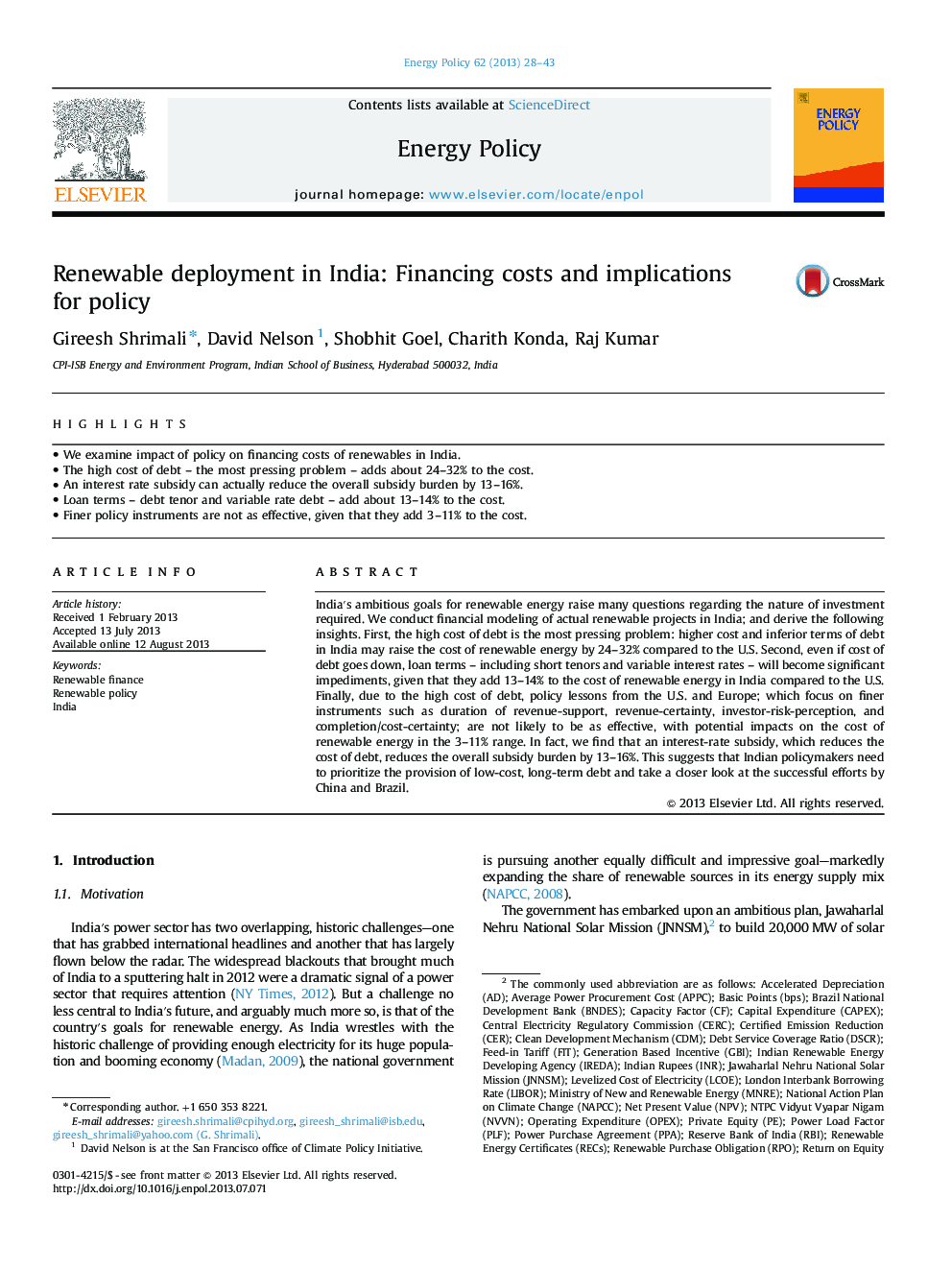| Article ID | Journal | Published Year | Pages | File Type |
|---|---|---|---|---|
| 7403541 | Energy Policy | 2013 | 16 Pages |
Abstract
Indiaâ²s ambitious goals for renewable energy raise many questions regarding the nature of investment required. We conduct financial modeling of actual renewable projects in India; and derive the following insights. First, the high cost of debt is the most pressing problem: higher cost and inferior terms of debt in India may raise the cost of renewable energy by 24-32% compared to the U.S. Second, even if cost of debt goes down, loan terms - including short tenors and variable interest rates - will become significant impediments, given that they add 13-14% to the cost of renewable energy in India compared to the U.S. Finally, due to the high cost of debt, policy lessons from the U.S. and Europe; which focus on finer instruments such as duration of revenue-support, revenue-certainty, investor-risk-perception, and completion/cost-certainty; are not likely to be as effective, with potential impacts on the cost of renewable energy in the 3-11% range. In fact, we find that an interest-rate subsidy, which reduces the cost of debt, reduces the overall subsidy burden by 13-16%. This suggests that Indian policymakers need to prioritize the provision of low-cost, long-term debt and take a closer look at the successful efforts by China and Brazil.
Keywords
Related Topics
Physical Sciences and Engineering
Energy
Energy Engineering and Power Technology
Authors
Gireesh Shrimali, David Nelson, Shobhit Goel, Charith Konda, Raj Kumar,
